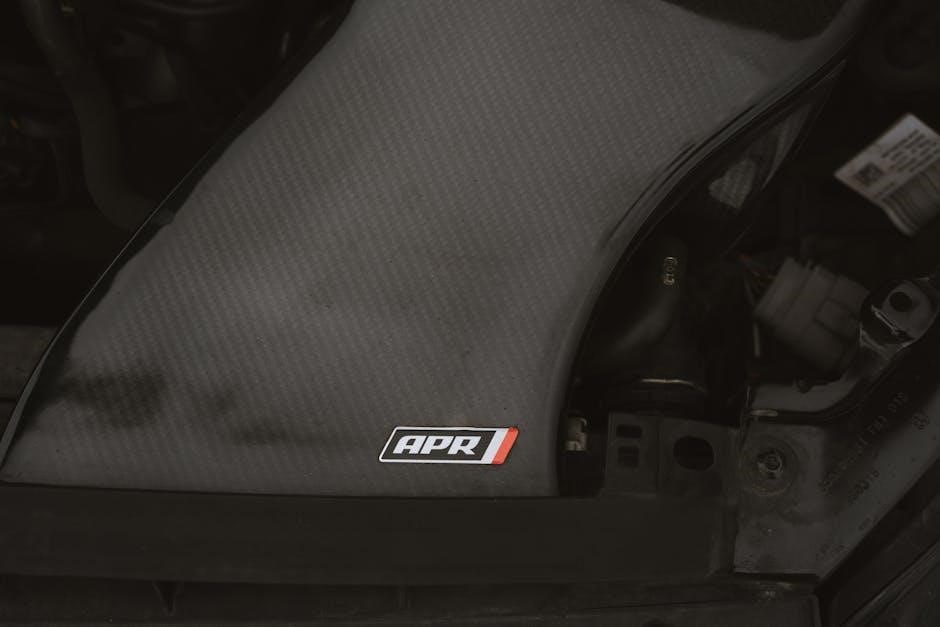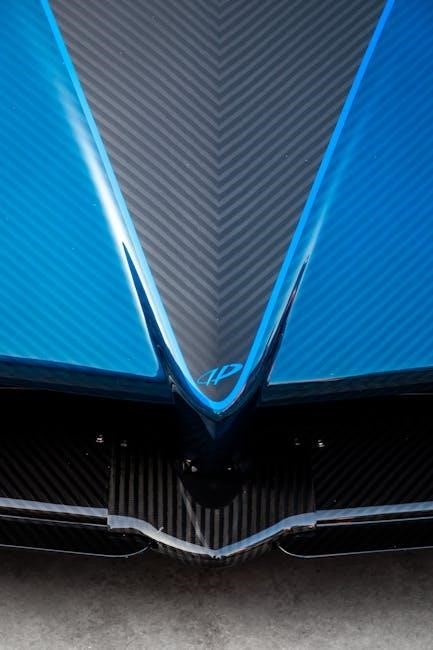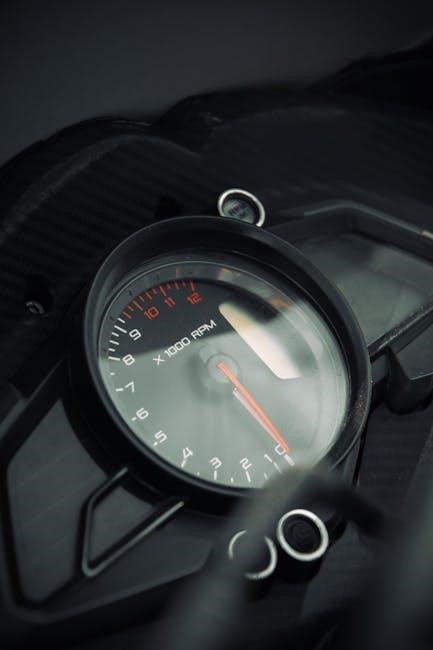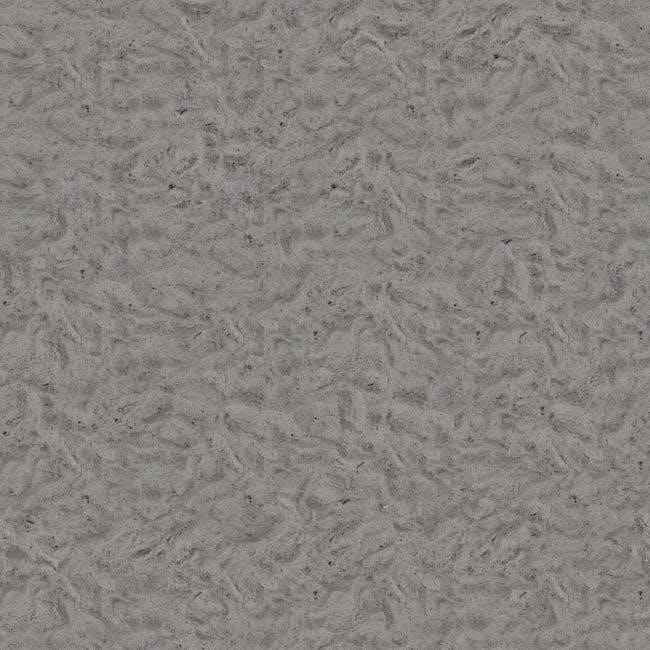Carbon fiber sanding is essential for refining surfaces, ensuring durability, and enhancing aesthetics. It demands precision and skill to handle this high-performance material effectively across industries.
1.1 Importance of Sanding in Carbon Fiber Manufacturing
Sanding is crucial in carbon fiber manufacturing to achieve a smooth, even surface and prepare the material for coatings. It removes imperfections, ensuring proper adhesion of resins or primers, and enhances the material’s strength and durability. Proper sanding prevents defects, such as delamination, and ensures a professional finish. By refining edges and smoothing surfaces, sanding contributes to both aesthetic appeal and structural integrity, making it a critical step in producing high-quality carbon fiber components across industries.
1.2 Brief Overview of the Carbon Fiber Sanding Process
Carbon fiber sanding involves a multi-step process to refine and smooth surfaces. It begins with rough shaping using coarse grits to remove excess material, followed by fine sanding with progressively higher grits for a polished finish. Wet sanding is often used for final touches to minimize dust, while dry sanding handles initial shaping. Proper techniques and tools, like sanding blocks and orbital sanders, ensure even surfaces. Cleaning between stages and maintaining proper ventilation are crucial for safety and optimal results, leading to a flawless finish ready for coatings.

Safety and Protective Equipment
Protective gear, including gloves, safety glasses, and a dust mask, is essential when sanding carbon fiber to prevent injuries and exposure to harmful particles and dust.
2.1 Essential Protective Gear for Sanding
Protective gear is vital when sanding carbon fiber to prevent injuries and exposure to harmful particles. Safety glasses or goggles shield eyes from debris, while a dust mask or respirator prevents inhalation of carbon fiber dust and resin particles, which can cause respiratory issues. Gloves protect hands from abrasions and ensure a firm grip on tools. Long sleeves and pants minimize skin irritation, and proper ventilation is crucial to avoid dust accumulation. Open-toe shoes and loose jewelry should be avoided to reduce accident risks, ensuring a safe and controlled sanding environment.
2.2 Importance of Proper Ventilation
Proper ventilation is critical when sanding carbon fiber to minimize dust and prevent respiratory issues. Working in a well-ventilated area or using a dust extraction system reduces airborne particles. Open windows or use fans to improve airflow, ensuring dust doesn’t settle on the work surface. A HEPA air purifier can further clean the air, preventing dust accumulation that might scratch the surface during sanding. Poor ventilation can lead to health risks and subpar results, making it essential to maintain a clean, well-ventilated workspace for safety and optimal sanding outcomes.

Surface Preparation
Clean the carbon fiber surface with isopropyl alcohol, inspect for debris, and feather edges to prevent sharp transitions. Secure the workpiece firmly to avoid movement during sanding.
3.1 Cleaning the Carbon Fiber Surface
Cleaning the carbon fiber surface is crucial before sanding. Use a lint-free cloth dampened with isopropyl alcohol to remove dirt, oils, or residue. Ensure the surface is dry and free of contaminants. Inspect for any debris, old finishes, or uneven areas. Feather edges to prevent sharp transitions and lightly sand protrusions or burrs. Secure the workpiece firmly to prevent movement during sanding. A clean, prepared surface ensures better adhesion for coatings and a smoother sanding process. Proper preparation is key to achieving a professional finish.
3.2 Inspecting and Feathering Edges
Inspecting and feathering edges are critical steps in carbon fiber sanding. Examine edges for sharpness, burrs, or unevenness. Feathering involves blending edges smoothly to prevent sharp transitions, ensuring a seamless finish. Use progressively finer grits, starting with coarse sandpaper for rough shaping and moving to finer grits for smoothing. Regularly check the surface to avoid over-sanding. Feathering enhances the material’s durability and aesthetic appeal, making it safer and more professional in appearance. This process is vital for achieving a polished, high-quality finish in carbon fiber applications.

Selecting the Right Sandpaper
Selecting the right sandpaper is crucial for carbon fiber sanding. Use a range of grits to achieve smooth finishes and avoid damaging the material.
4.1 Grit Progression for Carbon Fiber
Grit progression is crucial for carbon fiber sanding to ensure a smooth finish. Start with coarse grits (60-100) for rough shaping and edge cleanup. Progress to medium grits (320-400) to refine surfaces and remove imperfections. Finally, use fine grits (800-1200) for polishing and achieving a high-luster finish. Proper grit progression prevents damage and ensures even results. Avoid skipping grits, as this can leave scratches. Wet sanding with fine grits minimizes dust and extends sandpaper life, while dry sanding is better for initial rough shaping. Always clean between grits to maintain surface quality and prevent contamination.
4.2 Wet vs. Dry Sanding: When to Use Each
Wet sanding is ideal for fine grits (800-1200), reducing dust and preventing sandpaper clogging, while achieving a polished finish. It’s best for final touches and high-luster surfaces. Dry sanding is better for coarse grits (60-100), suited for rough shaping and heavy material removal but generates excessive dust. Wet sanding extends sandpaper life and minimizes dust, while dry sanding is more aggressive. Always clean the surface after wet sanding to remove residue. Choose the method based on the project stage: wet for polishing, dry for initial shaping. Proper technique ensures optimal results for both methods.

Step-by-Step Sanding Process
Start with coarse grits for rough shaping, progress to finer grits for smoothing, and finish with polishing to achieve a professional, high-luster surface finish.
5.1 Rough Shaping with Coarse Grits
Rough shaping begins with coarse-grit sandpaper (60-100) to remove excess material and smooth uneven edges. Work in consistent, firm strokes, maintaining a steady angle to avoid uneven wear. Keep the sandpaper wet if wet sanding, as it reduces dust and prevents clogging. Regularly inspect the surface to avoid over-sanding, which can damage the carbon fiber. This step lays the foundation for finer sanding, ensuring a solid base for subsequent polishing and finishing. Patience and proper technique are key to achieving optimal results in this critical initial phase.
5.2 Fine Sanding for a Smooth Surface
Transition to finer grits (320-1200) for a smoother surface, using wet sanding to minimize dust and extend sandpaper life. Work in small, controlled strokes with even pressure, using a sanding block for flat areas to maintain consistency. Regularly clean the surface and sandpaper to prevent debris buildup. Progress gradually through higher grits (up to 2500) for a polished finish. This step refines the surface, removing minor scratches and imperfections. Fine sanding prepares the carbon fiber for primer or resin application, ensuring a uniform, high-gloss surface. Patience and attention to detail are crucial to avoid damaging the material.
5.3 Final Touches and Polishing

After sanding, apply a polishing compound using a soft cloth or orbital sander with a polishing pad. Work in circular motions with light pressure to avoid overheating. Progress from coarse to fine compounds for a showroom finish. For added protection, apply a clear coat or wax, following manufacturer instructions. Use a lint-free cloth to buff the surface, ensuring no residue remains. Regularly inspect for imperfections and re-polish as needed. This step enhances durability and maintains the carbon fiber’s aesthetic appeal, ensuring a professional-grade finish.

Advanced Sanding Techniques
Advanced sanding techniques involve using orbital sanders and sanding blocks for even surfaces, ensuring precision and efficiency in achieving a flawless carbon fiber finish.
6.1 Using Sanding Blocks for Even Surfaces
Sanding blocks distribute pressure uniformly, preventing uneven wear on carbon fiber surfaces. Use them with varying grits, starting coarse for shaping and progressing to finer grits for polishing. Blocks with soft padding are ideal for high-grit sanding, maintaining contact without loading the paper. Regularly clean the sandpaper to avoid dust buildup, ensuring effective sanding. This technique is crucial for achieving flat, even surfaces, especially when preparing for coatings or polishing, ensuring a professional-quality finish.
6.2 Orbital Sanders for Efficient Sanding
Orbital sanders efficiently smooth large carbon fiber surfaces, offering consistency and speed. Start with lower grits for rough shaping, then progress to finer grits for polishing. Use controlled, even movements to avoid uneven sanding and excessive heat buildup. While orbital sanders are ideal for vast areas, they are less suitable for intricate shapes or small details, requiring manual sanding for such tasks. Proper technique ensures efficient material removal without damage, making them a valuable tool for achieving professional-quality results in carbon fiber projects.

Common Mistakes to Avoid
Over-sanding, excessive pressure, and poor ventilation are common errors. Skipping grits and improper sandpaper use can damage surfaces, while inadequate cleaning reintroduces contaminants, ruining finishes.
7.1 Over-Sanding and Excessive Pressure
Over-sanding and excessive pressure can damage the carbon fiber, creating uneven surfaces or even exposing underlying layers. Avoid applying too much force, as it generates heat, potentially weakening the material. Use light, consistent pressure and monitor progress to prevent removing too much material. Over-sanding can also lead to scratches that are difficult to polish out. Always follow grit progression and avoid staying too long in one area to maintain a smooth, professional finish and preserve the integrity of the carbon fiber.
7.2 Skipping Grit Progression
SSkipping grit progression is a common mistake that can lead to an uneven surface and deep scratches that are challenging to polish out. Proper grit sequence ensures a smooth finish, while neglecting it can damage the material and make it difficult to achieve a professional finish. Each grit stage refines the surface further, preparing it for coatings. Skipping steps can result in a poor bond between the carbon fiber and any applied resins or primers. Always follow the recommended progression to ensure optimal results and a flawless finish.

Applying Finishing Coatings
Applying UV resin or epoxy primer protects the carbon fiber and enhances adhesion for further coatings. Final polishing with clear coats ensures a glossy, professional finish.
8.1 Preparing for UV Resin or Epoxy Primer
Proper surface preparation is critical before applying UV resin or epoxy primer. Ensure the carbon fiber is clean, dry, and free of dust or contaminants. Lightly sand the area with a fine-grit sandpaper (1200-2500 grit) to create a smooth, even surface. Wipe down the material with a cleaning agent, such as isopropyl alcohol, to remove any residues. Allow the surface to dry completely before proceeding. This step ensures optimal adhesion and a professional finish, preventing bonding issues with molds or other materials. Always follow the manufacturer’s instructions for specific primer or resin products to achieve the best results.
8.2 Polishing and Clear Coating
Polishing and clear coating are the final steps to achieve a high-gloss, professional appearance on carbon fiber surfaces. After sanding, apply a polishing compound using a soft, clean cloth or an orbital sander with a polishing pad. Work in circular motions, applying light pressure to avoid overheating the material. For added protection and gloss, apply a clear coat or wax, following the manufacturer’s instructions. Use a clean, lint-free cloth to buff the surface, ensuring no residue remains. Regularly inspect the surface for imperfections and re-polish as needed to maintain durability and aesthetic appeal.
Carbon fiber sanding is a precise process requiring patience and skill to achieve a professional finish. Proper techniques ensure durability and enhance the material’s aesthetic appeal.
9.1 Final Tips for a Professional Finish
For a professional finish, always use high-grit sandpaper (1200-2500) to achieve a polished surface. Maintain even pressure and clean the workpiece regularly to avoid dust buildup. Orbital sanders and sanding blocks are ideal for large, flat areas, ensuring consistency. After sanding, apply a clear coat or wax for added gloss and protection. Avoid over-sanding, as it can damage the material. Work in a well-ventilated area and use proper safety gear to ensure a safe and successful process. These tips will help you achieve a flawless, professional finish on carbon fiber surfaces.




About the author